Registered with the Registrar of Newspapers for India under R.N.I 53640/91
Vol. XXVI No. 12, October 1-15, 2016
Some leading Jesuits of Madras
(By Dr. Anand Amaladss)
(Continued from last fortnight)
Antonio Rubino (1578-1643):
He reached Goa in 1603 and in 1606 was sent to Chandragiri. There, he learnt Telugu and introduced European mathematics, astronomy and cosmography at the court of Vijayanagara. In 1608 he wrote Relation (in Italian), narrating the history and religion of Vijayanagara. In 1609 he wrote Description of the Kingdom and Coasts of Vijayanagara. In 1613 he took his final vows and was made Rector of the Jesuit college in Meliapore and was there till 1619 when he was made Rector of the college in Colombo.
In 1642, Rubino decided to go to Japan. In 1641 he reached Manila and there obtained support, for his “suicide mission” as described by his colleagues, from the Spanish Governor and the Jesuits. In December, 1642, despite opposition in Macao, he went to Japan with four Jesuit companions. They were immediately arrested there and after four months of torture, Rubino died on March 22, 1643.
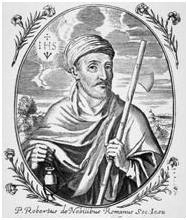 Roberto de Nobili.
Roberto de Nobili.
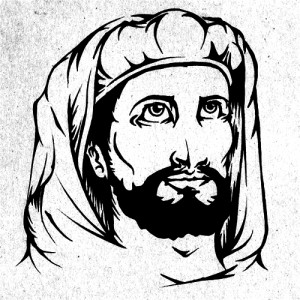 John de Britto
John de Britto
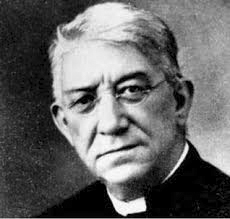 Bertram.
Bertram.
Rubino’s martyrdom was not honoured by Rome because it was perceived as misadventure. Some writers defend him and are in praise of him, others are critical of his misadventure. As a result, his texts were never published. Now a Spanish scholar, Jean Paul Rubies, in Cambridge, is working on the text of Antonio Rubino’s Account of the History and Religion of Vijayanagara (1608).
This description of the history and religion of Vijaya-nagara can be considered as the first detailed discussion of the religion of the interior of South India, preceding by a few years Roberto de Nobili’s more detailed and complex writings. This is especially useful in showing the initial intellectual priorities of the well-educated Jesuit missionary of the mature generation at the turn of the 17th Century.
The favorable reception which Venkatah II of Vijayanagara gave the Jesuits opened up the possibility in the interior of India for the first time. From 1600, three Jesuits lived in Chandragiri. After 1606 Venkatah II transferred his capital to Vellore, which he had recently conquered from its semi-independent Nayaks, and the Jesuits, shadowing the court, began to operate from both cities. Rubino’s arrival in 1606 coincided with the most decisive phase in the history of the mission.
Before the fall of the old capital in 1565, Aravidu Rama Raja, the de facto ruler of the empire, held the lands around Mylapore as a private family captaincy. The transfer of the capital to Chandragiri in 1592 increased the interest and direct influence of the dynasty in the affairs of San Thomé.
It is important to consider Venkatah’s own motivations for welcoming the Jesuits at his court. San Thomé was then at the height of its commercial prosperity through its export of painted textiles to Malacca and Pegu. For Venkatah II the Portuguese were potentially and most immediately useful allies and beyond San Thomé he sought friendship with the authorities in Goa and a direct link to the court of Philip II of Portugal in Spain. In this context the Jesuits, already well established in San Thomé, presented themselves as useful mediators, a cheap alternative to a lay resident ambassador.
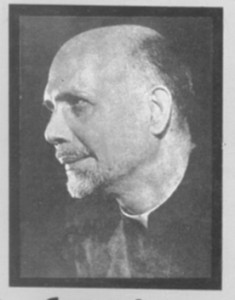 Jerome de Souza
Jerome de Souza
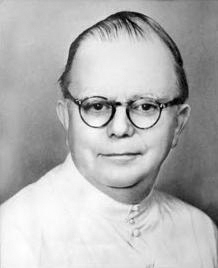 Charles Racine
Charles Racine
When the Mughal empire threatened the Muslim kingdoms of the Deccan, it prompted a number of embassies between Chandragiri and Goa in 1601-1602 in which the Jesuits at Venkatah’s court played a prominent role – not the last time when would-be missionaries became diplomats.
When Venktah II died in 1614, Vijayanagara fell into civil war and the prospect of resuming the mission in Chandragiri disappeared. But the Jesuits were firmly entrenched in San Thomé where Rubino was.
Roberto de Nobili (1577-1656): Came to Goa in 1605 and completed his theological studies in St. Paul’s College in Goa. In 1606 he came to Madurai. He learnt Tamil, Sanskrit, Telugu and his writings are available in all these languages.
Dressed like a sannyasin in local robes, wearing the sacred thread and rudrakshamala, he advocated that the Latin tradition should not be introduced in Tamizhagam, and that the worship must be done in the local cultural tradition. The Vatican banned his method from 1612. But Pope Gregory XV in 1623 withdrew the ban on what was called the Malabar (Tamil) rite.
Towards the end of his life, de Nobili was sent to Jaffna against his wishes. But after two years, in 1648, he got permission to come back to India. He settled in Mylapore. He died and was buried there on January 16, 1656, but it is not certain where exactly he was buried.
De Nobili remains a controversial figure to this day.
John Hector de Britto Arulnandar (1647-1693), a sucessor of de Nobili in Madurai, was martyred in Oriyur, in Ramnad District, and is venerated as a saint in the southern districts.
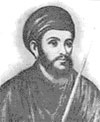 Constantin Joseph
Constantin Joseph
Beschi.
Constantine Joseph Beschi (Viramaamunivar) (1680-1747): Arrived in Madurai in May 1711. His statue was installed by the Government of Tamil Nadu in Madras’s Marina beach in recognition of his 23-year contribution to Tamil language and literature.
His main works are: Tembavani – an epic in Tamil, Tirukkavalur Kalampakam, Adaikkala Nayakimel Venkalippaa, Adaikkala Maalai, Centamil akaradhi (1732), Kotuntam akaradhi (1744) and Paramaartha kuruvin Kathai.
Ka. Naa. Subramanyam, in his book The Catholic Community in India, sums up the contribution of Beschi as follows:
“He holds many ‘firsts’ in the Tamil language; he was the compiler of the first dictionary, the first reformer of the written script, the first grammarian of the spoken word, the first anthologist and the first prose writer who used prose for the first independent creative work done in the language. He was a poet of fair merit and most of his work survives to this day. ‘Tales of the Guru who was a Simpleton’ was favourite reading all over South India and drew its inspiration from the folk tales of two continents. It makes ironic fun of the pretentious teacher of wisdom, albeit naïve and simple.”
It should be mentioned that he was not the first one to write prose in Tamil. In fact, Mayilai Seeni Venkatasamy has pointed out that before Beschi there was de Nobili and, even before him, there was the Portuguese Jesuit Henrique Henriques (On the Fisheries Coast), who wrote prose works in Tamil, but that Beschi was a respected figure is clear.
Fr. Michael Ansaldo (1739-1805): He established a refuge for abandoned girls and called it Bon Secours Convent. This was the tiny seed of the Bon Secours Congregation and he was the founder of Gonzaga Sisters.
Fr. Bertram, (1870-1936): Founder principal of Loyola College. A gifted linguist, he was acting Vice-Chancellor at the University of Madras (1934).
Fr. Varin (1886-1956) of Loyola College was a musician and composer. He is remembered among Christians because of his music composition for the Eucharistic Congress in Madras in 1936-37 at the time of the Golden Jubilee of the Indian Hierarchy.
Augustine Sauliere (1885-1966): Historian, writer and linguist. He was the archivist of the Jesuit province in Tamil Nadu and has translated several texts from Latin and French into English. He was the early biographer of de Nobili, Constantius Beschi and John de Britto.
Fr. Charles Racine (1897-1976) was an outstanding mathematician who was responsible for nurturing several young Indian mathematicians who went on to considerable achievements abroad. He was appointed to the staff of St. Joseph’s College, Trichinopoly, then moved to Loyola, Madras in 1939 where he remained till his death in 1976. In 1962 he received the Legion of Honour from the President of France.
Fr. Murphy wrote of him: “It is curious that those who lived with him longest knew him least. One thinks of Fr. Racine as quiet, like a hermit in his cell, everlastingly thinking of the sublunary abstractions of number, infinitude and inescapably God; friends, a few and those intellectual; interest unknown… and how completely false! He was, like so many mathematicians, a lover of music, a keen conversationalist, witty, observant and interested in everything around him.”
Fr. Jerome de Souza (1897-1977): A Member of the Indian Constituent Assembly and delegate to UNO from 1942 to 1950, he was Loyola College’s Rector and Principal.
Fr. Ignatius Hirudayam (1910-1995): A spiritual guide and a theologian in dialogue with religions. He was the founder of the then Aikiya Alayam, dialogue centre, in Mylapore.
Fr. Pierre Ceyrac (1914-2012): The last of the French Jesuits, a great social activist who worked for the cause of poor children and the marginalised till the end.
(Concluded)

